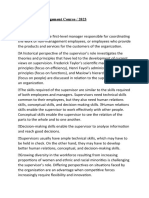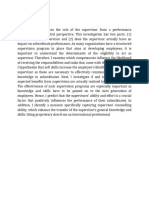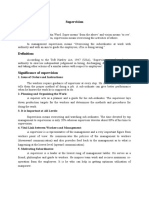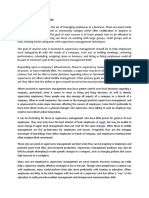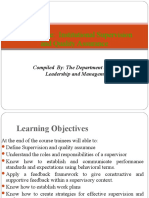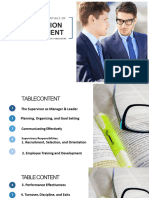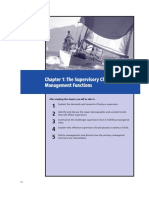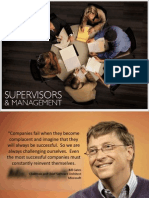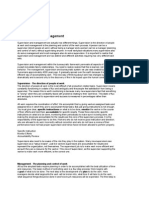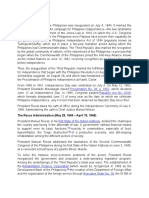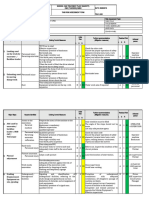0% found this document useful (0 votes)
25 views27 pagesCH 01
The document discusses the role and responsibilities of supervisors. It covers topics like the functions of management, different management theories, and the skills needed to be a supervisor. These include technical, human, and conceptual skills as well as personal qualities like flexibility and believing in employees.
Uploaded by
cikedis.chocoCopyright
© © All Rights Reserved
We take content rights seriously. If you suspect this is your content, claim it here.
Available Formats
Download as PPTX, PDF, TXT or read online on Scribd
0% found this document useful (0 votes)
25 views27 pagesCH 01
The document discusses the role and responsibilities of supervisors. It covers topics like the functions of management, different management theories, and the skills needed to be a supervisor. These include technical, human, and conceptual skills as well as personal qualities like flexibility and believing in employees.
Uploaded by
cikedis.chocoCopyright
© © All Rights Reserved
We take content rights seriously. If you suspect this is your content, claim it here.
Available Formats
Download as PPTX, PDF, TXT or read online on Scribd
/ 27






